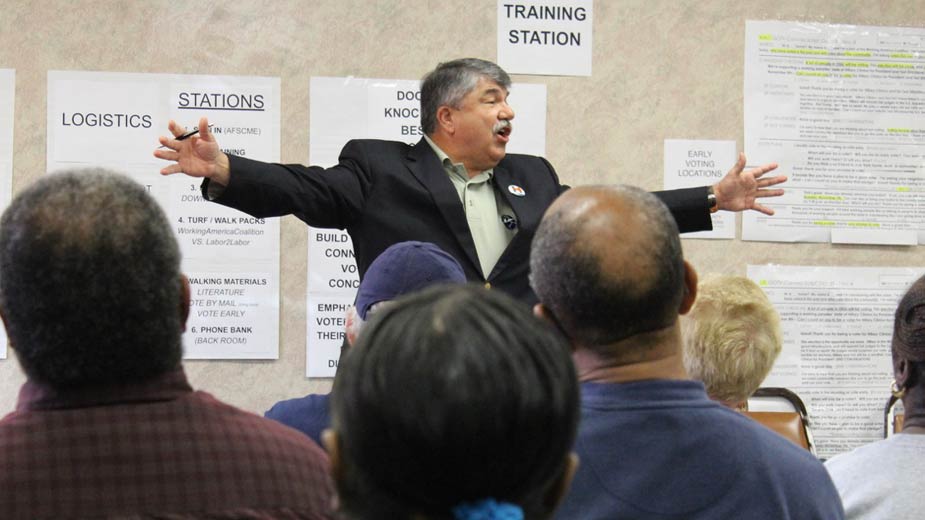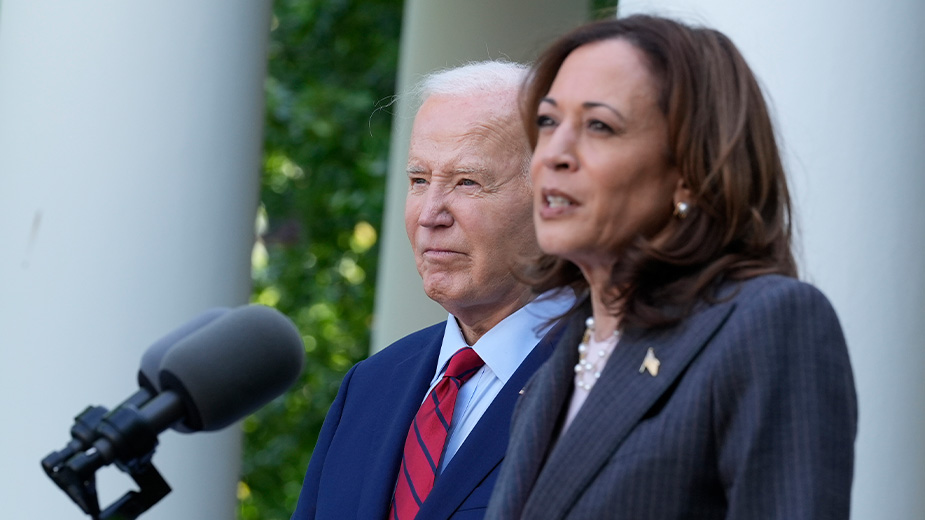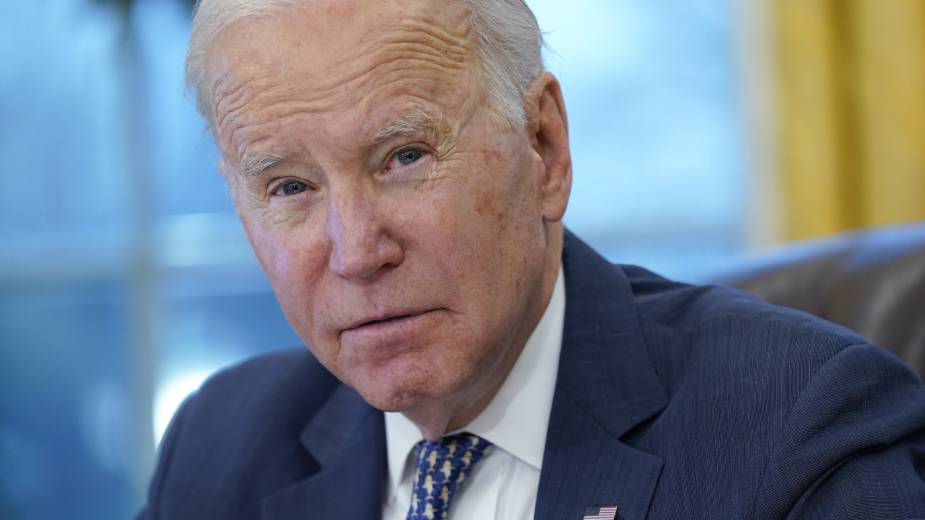Labor Groups Look to Regain Political Footing
YOUNGSTOWN, Ohio – If the 2010 election offered organized labor no other lesson in Ohio, Bill Padisak reflects, it was the importance of who is elected governor.
That election – when congressional Republicans rode a national wave that swept Ohio as elsewhere – GOP nominee John Kasich narrowly defeated Democratic incumbent Ted Strickland.
The following year, Kasich signed into law Senate Bill 5, legislation that would have curtailed state and local public employees’ ability to bargain collectively had Ohio voters not reversed it in a referendum the following November.
After that, members “perked up and said, ‘We guess it matters who’s governor,’” Padisak says.
Padisak is president of the Mahoning-Trumbull AFL-CIO Council. He and other representatives of organized labor are closely eyeing this year’s election.
Top statewide offices, which include governor and justice on the supreme court, plus Democrat Sherrod Brown’s seat in the U.S. Senate and all 16 seats in the House of Representatives are contested. The election takes place against the backdrop of the presidency of Donald Trump and the state Legislature redistricting the House seats after the 2020 U.S. Census.
In 2016, many labor union members preferred U.S. Sen. Bernie Sanders, I-Vt., or were cool to the Democratic presidential nominee, Hillary Clinton, to the extent that they left the top lines on their ballots blank or voted for Trump and hoped that he would keep his promise about bringing back manufacturing jobs.
In the year since, several people Padisak has spoken with admit voting for Trump and regret it because they feel he isn’t honest or trustworthy. “There is a lot of buyer’s remorse,” he claims.
The AFL-CIO leader recalls driving throughout the 13th Ohio Congressional district and seeing signs for Trump and U.S. Rep. Tim Ryan, a Democrat, in the same yards.
“It was kind of odd,” he says.
Padisak, leaders of the Service Employees International Union, the International Brotherhood of Electrical Workers and the building trades all say their organizations are prepared to advocate for the candidates they believe will best represent their interests.
The local AFL-CIO councils take their lead from the state office in races such as governor, U.S. senator and congressman, Padisak says.
“We have Joe Schiavoni, who we dearly love in the governor’s race, but at this point local labor councils are not allowed to take sides,” he says. A board of state leaders will interview candidates and determine who will get the Ohio AFL-CIO endorsement.
The statewide board takes recommendations from the local councils regarding candidates for state General Assembly, typically accepting those suggestions, he says.
The Ohio gubernatorial race should prove particularly interesting, Padisak says, given the recent entries of former congressman and Cleveland mayor Dennis Kucinich and Richard Cordray, former state treasurer and director of the federal Consumer Financial Protection Bureau.
Padisak says his organization has found the most effective way to persuade members is for local leaders to present their members information that compares the candidates. “The local union leadership is the best key to informing them about who the candidates are,” he says. Campaign literature sent through the Postal Service has little impact.
Once Election Day approaches, the most effective get-out-the-vote tool is making sure members are registered to vote in the first place, Padisak says.
“It’s about having as many one-on-one conversations with working people in the Mahoning Valley as we can,” affirms Anthony Caldwell, SEIU District 1199 political director for West Virginia, Kentucky and Ohio. “It can be done in a variety of ways, but the way unions have done it for years is door-to-door canvassing.”
Members will spend “a lot of time between now and November” focusing on issues relevant to the lives of working people, many of whom feel that Democrats have lost touch with them.
Issues of concern to SEIU and its members include legislation advancing in Columbus that would “basically dismantle” public and private sector unions. “So those have been a major focus for organized labor,” Caldwell says.
The union also is keeping an eye on national legislation that has been introduced but still in committee, as well as the Janus v. AFSCME lawsuit, which he argues “could make the entire country right-to-work” for public sector unions.
“As unions and workers are being faced with state and national-level challenges, we’re looking to support candidates who understand the impact unions make in the lives of working people,” Caldwell says.
Unfortunately, most of the jobs created since the Great Recession are low-wage or part-time that make supporting a family hard unless someone is working two or three jobs, he says.
“We want to see candidates talk about good-paying, full-time jobs that have benefits and retirement security,” he says. U.S. Rep. Tim Ryan has championed that to his national party and state Rep. John Boccieri and others at the state level, he says.
Many voters who voted for Trump did so because they wanted change and “to try something new,” Caldwell says.
In retrospect, they haven’t seen their situations improve. “In fact, it’s taking them backward,” he continues. “The president has touted his vast accomplishments, but where the rubber meets the road the average person is no better off today than they were a year ago.”
By the time the elections arrive in November, voters will still feel that Congress is out of touch with the issues they care about, and they’ll be looking for change again, the SEIU official predicts.
“You’re going to find that independent voters are likely to come back to the Democratic Party, one, out of disgust, but two, because looking to change direction is going to be somewhat important,” he says.
Jim Burgham, IBEW Local 64 business manager, says his union is “always fully engaged” in political issues. If the union endorses a candidate, it does the most it can to maximize its financial contributions to a candidate and “everything we can to get out the vote and educate our members as to why we should support the candidate,” he says.
IBEW locals in Ohio have agreed to remain hands-off until after the primary before they support any statewide candidate, Burgham says.
“As you can imagine, every corner of the state has somebody that they have probably dealt with before and been supportive of their case,” Burgham says.
Like his fellow labor leaders, Burgham reports several of his members who voted for Trump now say they are unhappy. Specifically, they claim the president hasn’t kept promises on infrastructure spending and immigration. “Other than if they were simply gun-rights activists, they’re not happy with anything he’s done,” he says.
Last summer, the Western Reserve Building & Construction Trades Council threw its support behind Schiavoni’s bid for governor. “He comes from where we’re from, and he’s got our values,” says Rocky DiGennaro, president of the council. “Say what you will about Youngstown, but people here are very loyal to people who are loyal to them.”
The council also is leaning toward state Rep. John Boccieri, D-59 Poland, in his bid for the state senate seat Schiavoni is vacating. Boccieri, a former congressman, has been “a great friend to labor over the years,” DiGennaro says.
That said, having a “D” by one’s name is no guarantee of support, he continues. Most people in the trades lean slightly to the right politically, he says. They back people who support their goals. And the main goal of organized labor is putting its members to work.
“We don’t just blindly support Democrats any longer. We support candidates that are fair to our issues,” he says.
Tim Ryan “has been great for this area” and labor has “high hopes” for him, but members also support what are often called “Davis-Bacon Republicans,” DiGennaro says. Among them is U.S. Rep. Bill Johnson, R-6 Ohio, whose district includes part of the council’s coverage area.
“He said he’s a convert. He came from a military background and didn’t know much about what unions did,” DiGennaro says. After meeting with members, he learned they pay for their own training, health insurance and pensions, for example.
Many members of the building trades have contributed to state Rep. Larry Householder, a former Republican speaker of the Ohio House of Representatives who is expected to seek the post again when the current speaker leaves because of term limits. Householder doesn’t support right-to-work legislation or getting rid of the prevailing wage, he says, two important issues to labor.
“We’re very conservative people. We want to work and we want to be paid accordingly,” he says.
Pictured: AFL-CIO President Richard Trumka made a stop in the Valley days before the 2016 presidential election. In the time since, local labor groups have remained active in the political scene.
Copyright 2024 The Business Journal, Youngstown, Ohio.



